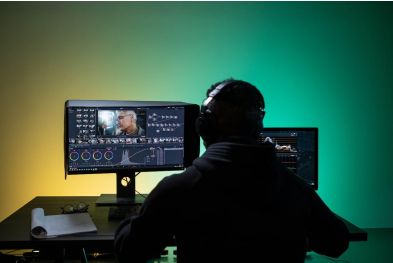How to Build an Efficient Home Office PC
With the rise of remote work, having a reliable and efficient home office PC is more important than ever. Whether you’re handling spreadsheets, attending virtual meetings, or managing projects, the right PC can significantly enhance your productivity. In this guide, we’ll walk you through the key components and features to consider when building a PC for your home office.
Why Build a Home Office PC?
A custom-built home office PC offers several advantages:
Performance: Tailor your system to handle your specific work tasks efficiently.
Cost-Effectiveness: Save money by choosing components that meet your needs without unnecessary extras.
Upgradability: Easily upgrade individual parts as your work requirements evolve.
Customization: Build a system that fits your workflow and preferences.
Key Components for a Home Office PC
1. Processor (CPU)
The CPU is the brain of your PC. For a home office setup, a mid-range processor is usually sufficient:
AMD Ryzen 5 5600G: Excellent for multitasking and light productivity tasks.
Intel Core i5-12400: Great performance for general office work.
2. Graphics Card (GPU)
For most home office tasks, integrated graphics are sufficient. However, if you need a dedicated GPU for tasks like video editing or graphic design, consider:
NVIDIA GeForce GTX 1650: Great for light GPU tasks.
AMD Radeon RX 6400: Offers excellent performance for its price.
3. Memory (RAM)
Multitasking requires a good amount of memory. Aim for at least 16GB of DDR4 RAM with a speed of 3200MHz or higher.
4. Storage
Fast and ample storage is crucial for a home office PC:
SSD: A 500GB NVMe SSD is ideal for your operating system, software, and active projects.
HDD: Add a 1TB or 2TB HDD for storing large files and backups.
5. Motherboard
Choose a motherboard that supports your CPU and has the features you need. For example:
AMD Build: B550 chipset.
Intel Build: B660 chipset.
6. Power Supply (PSU)
A 450W or 550W PSU with an 80 Plus Bronze rating is sufficient for most home office builds.
7. Case
Pick a case with good airflow and enough space for your components. Popular options include the Cooler Master MasterBox Q300L and NZXT H510.
Additional Features to Consider
1. Monitor
A high-quality monitor is essential for productivity:
Resolution: 1080p or 1440p for clear visuals.
Size: 24 inches or larger for a comfortable work experience.
Dual Monitors: Consider using two monitors for increased productivity.
2. Cooling
Proper cooling ensures your PC runs smoothly and quietly:
Air Cooling: High-quality CPU coolers like the Noctua NH-U12S.
Liquid Cooling: AIO coolers like the Corsair H60 for efficient heat dissipation.
3. Peripherals
Keyboard and Mouse: Choose comfortable and responsive peripherals for long work sessions.
Webcam: A high-quality webcam like the Logitech C920 for clear video calls.
Headset: A good headset with a microphone for virtual meetings.
4. Operating System
Choose an operating system that fits your work needs:
Windows: Great for general office work and compatibility with most software.
Linux: Ideal for developers and those who prefer open-source software.
macOS: Perfect for creative professionals and those in the Apple ecosystem.
Step-by-Step Guide to Building Your PC
Install the CPU: Carefully place the CPU into the motherboard socket.
Install the RAM: Insert the RAM sticks into the appropriate slots.
Mount the Motherboard: Secure the motherboard inside the case.
Install the GPU: Insert the graphics card into the PCIe slot (if applicable).
Connect Storage: Attach the SSD and HDD to the motherboard and power supply.
Connect Power Supply: Plug in all necessary power cables.
Cable Management: Organize cables to improve airflow and aesthetics.
Test Your Build: Power on your PC and ensure everything works correctly.
Example Home Office PC Build
Here’s an example of an efficient home office PC build:
| Component | Model | Approx. Cost |
|---|---|---|
| CPU | AMD Ryzen 5 5600G | $150 |
| GPU | Integrated Graphics | $0 |
| RAM | 16GB DDR4 3200MHz | $60 |
| Storage | 500GB NVMe SSD + 1TB HDD | 70+70+40 |
| Motherboard | B550 Chipset | $100 |
| PSU | 450W 80 Plus Bronze | $50 |
| Case | Cooler Master MasterBox Q300L | $50 |
| Total | $520 |
Final Thoughts
Building a home office PC requires careful consideration of components and features to ensure smooth and efficient performance. By following this guide, you can create a powerful and reliable PC that meets your work needs and enhances your productivity.
Whether you’re handling spreadsheets, attending virtual meetings, or managing projects, a well-built PC will provide the performance and reliability you need to work efficiently from home.
Reminder:
Found this guide helpful? Share it with your friends and fellow remote workers on social media! Let’s help everyone build efficient home office PCs. 🚀
By following these steps, you’ll be able to create a PC that delivers excellent performance for your home office, ensuring a smooth and efficient workflow. Happy working!







